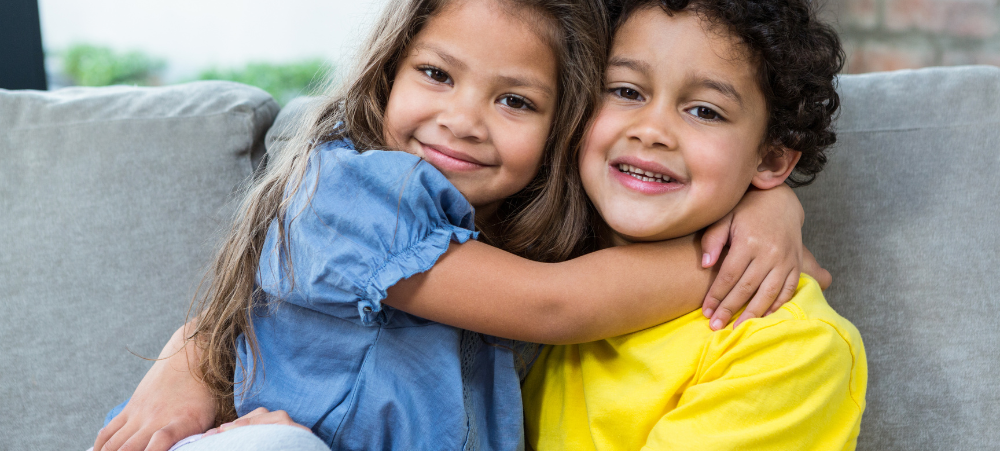Teaching children about diversity and inclusion is one of the most important steps we can take as parents, caregivers, and educators. In a world that is increasingly connected, it’s essential for kids to understand, appreciate, and respect differences. By introducing these concepts early, we can help shape their perceptions of the world and guide them in becoming compassionate, open-minded individuals.
While the conversation about diversity and inclusion may feel daunting for some, it doesn’t have to be. In fact, these lessons can be woven into everyday interactions and can become a natural part of growing up. Here’s a guide on how to talk to kids about diversity and inclusion in ways that are meaningful and age-appropriate.
1. Start with the Basics: What is Diversity?
Diversity simply refers to the variety of differences that make people unique. These differences can be visible, like race, gender, and ability, or invisible, like experiences, values, and beliefs. The idea of diversity can be introduced at a young age by emphasising that people are different in many ways, and that’s what makes the world interesting and vibrant.
Tips:
- Use everyday examples: Point out differences in the people around you—such as different hair colours, skin tones, and clothing styles—and explain that these differences are a normal and beautiful part of being human.
- Talk about family diversity: Children are often already exposed to diversity within their own families—whether it’s through different cultural backgrounds, languages, or traditions. Use these examples to make the concept more relatable.
2. Encourage Empathy Through Stories and Books
Stories and books are powerful tools for helping children understand and connect with others who may be different from them. Reading books that feature diverse characters and experiences can promote empathy, understanding, and acceptance. Stories also give children a safe space to explore difficult topics and ask questions.
Tips:
- Read diverse books: Choose books that reflect a variety of cultures, races, family structures, abilities, and experiences. Books like The Color of Us by Karen Katz and All Are Welcome by Alexandra Penfold are excellent choices.
- Discuss the story: After reading, ask your child questions like, “What made the character different from you?” or “How do you think the character felt when they were treated kindly?”
3. Normalise Conversations About Differences
It’s important to create an environment where it’s safe to talk openly about differences. Avoiding discussions about race, culture, or ability can send the message that these topics are taboo, which can lead to confusion or even reinforce stereotypes. By addressing diversity in a natural, non-judgmental way, you teach children that it’s okay to talk about differences and that everyone deserves respect.
Tips:
- Use age-appropriate language: For younger children, keep it simple. For example, “People can have different skin colours or celebrate different holidays, and that’s okay.”
- Acknowledge similarities and differences: Highlight how, while people are different, we all have things in common, such as the need for kindness, love, and respect.
4. Lead by Example
Children are keen observers and often model the behaviour they see in the adults around them. If they see you treating others with kindness, respect, and inclusivity, they are more likely to mirror those behaviours. Whether interacting with people of different backgrounds or addressing hurtful comments, your actions will teach them how to behave in a diverse world.
Tips:
- Demonstrate respect: Show respect for all people, regardless of their background, appearance, or ability. Acknowledge the value of people’s differences and encourage your child to do the same.
- Correct inappropriate behaviour: If you hear your child making an exclusionary or disrespectful comment, gently correct them by explaining why such comments are harmful and providing alternative, inclusive language.
5. Emphasise the Importance of Inclusion
Inclusion is about ensuring that everyone, regardless of their differences, is welcomed and valued. Teach your child that no one should be left out because of how they look, where they come from, or what they believe. Inclusion is about kindness, fairness, and making everyone feel like they belong.
Tips:
- Discuss group activities: Use examples of group settings, such as school, sports, or playdates, to talk about how important it is to include everyone, regardless of their background or differences.
- Encourage inclusive play: If you’re at the park or hosting a playdate, encourage your child to invite others to join in, especially those who may be feeling left out or isolated.
6. Discuss Stereotypes and Prejudices
As children grow, they may start to encounter stereotypes—oversimplified beliefs or generalisations about people based on their race, gender, culture, or other characteristics. It’s important to challenge these stereotypes by teaching your child to see people for who they truly are, rather than based on stereotypes they may encounter from media, peers, or other influences.
Tips:
- Address stereotypes directly: If your child makes a stereotype-based comment, calmly explain that not everyone from a certain group behaves in the same way. For example, “Not all girls like pink, and not all boys like blue. People can like whatever they want.”
- Talk about discrimination: Depending on your child’s age, discuss how discrimination hurts people and why we should treat everyone with fairness and kindness, regardless of their background.
7. Teach Respect for All Abilities
Diversity also extends to abilities—physical, emotional, and cognitive. It’s important for children to understand that people may have different abilities, but everyone deserves the same level of respect. By teaching children about disabilities and other challenges, you can foster empathy and inclusivity.
Tips:
- Talk about different abilities: Explain that some people may use a wheelchair or have difficulty seeing, hearing, or speaking. Help your child understand that these differences don’t define a person’s worth or abilities.
- Model inclusive language: Use respectful and inclusive language when talking about disabilities. Avoid terms that may be seen as offensive or stigmatising, such as “handicapped” or “retarded.”
8. Encourage Critical Thinking
As children grow, it’s essential to encourage them to think critically about diversity and inclusion. Encourage them to ask questions, think about how they would feel in different situations, and reflect on how they can contribute to making the world a more inclusive place.
Tips:
- Ask thought-provoking questions: Encourage your child to think critically by asking open-ended questions like, “How do you think that person might feel?” or “What can we do to help make everyone feel included?”
- Discuss real-world examples: Use news stories, movies, or social situations as opportunities to discuss issues of diversity and inclusion. Encourage your child to consider different perspectives and challenge unfair assumptions.
Conclusion
Talking to kids about diversity and inclusion is an ongoing process that lays the foundation for them to become respectful, compassionate, and open-minded individuals. By starting early and consistently reinforcing the importance of valuing differences, you can help your child grow into someone who embraces diversity in all its forms. Remember, children learn best through real-life examples and everyday conversations, so make it a point to model inclusive behaviours and keep the dialogue going. In doing so, you’ll be raising a generation of children who not only understand the value of diversity but also actively contribute to a more inclusive world.
We understand that there are many aspects that encompass a Mother, Father or Child and strive toward providing resources and services that accommodates this.
Our content is aimed to inform and educate families on issues starting from pregnancy through to the challenges of the teen-age years.
- Tips for Breastfeeding in Public: Confidence and Comfort - November 20, 2025
- Eskort launches Kiddos: South Africa’s first pork range made just for kids - November 13, 2025
- Putting the Power of Learning in Learners’ Hands During Global Education Week - November 12, 2025





